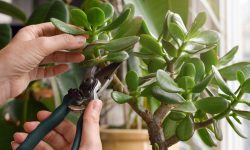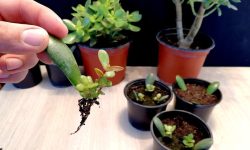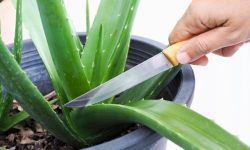Orchids are a type of plant that many people consider to be an air plant. This is because they do not require soil to grow, and they can get the majority of their nutrients from the air. Orchids are also known for being able to grow in very humid environments, which is another reason why they are often thought of as air plants.
Orchids are a type of flowering plant that is known for their beautiful blooms. They are native to tropical and subtropical regions of the world and can be found in many different habitats. While they are often associated with rainforests, they can also be found in deserts, mountains, and even marshy areas.
One of the things that makes orchids so special is that they have adapted to survive in a wide range of environments. This includes places where there is very little soil, such as on rocks or tree branches. In these cases, the plants rely on moisture and nutrients from the air around them – which is why they are sometimes called “air plants”.
While most orchids grow in humid conditions, there are some species that have adapted to drier climates. These plants usually have larger leaves that help to collect water from the air. Some desert-dwelling Orchids even have roots that can store water for long periods of time!
Whether you’re looking for a plant to brighten up your home or wanting to add some variety to your garden, Orchids are definitely worth considering!

Credit: www.youtube.com
Are Air Plants in the Orchid Family?
No, air plants are not in the orchid family. Orchids (Orchidaceae) and air plants (Bromeliaceae) are two different plant families. Air plants are in the Bromeliaceae family, which includes pineapples, Spanish moss, and about 3,000 other species of Bromeliads.
Can You Grow an Orchid Like an Air Plant?
No, you can’t grow an orchid like an air plant. Orchids need a different type of environment and care than air plants. They need a humid environment and bright, indirect light.
They also need to be fertilized regularly and have their roots misted with water.
What are Considered Air Plants?
Air plants are a type of Tillandsia, which is a genus in the Bromeliad family. There are around 650 species of Tillandsia, and all of them are considered air plants. Air plants get their name from their ability to grow without any soil – they absorb all the nutrients and water they need from the air around them.
Tillandsias are native to tropical and subtropical regions of Central America, South America, and the Southern United States. They can be found growing on trees, rocks, or even power lines! Some Tillandsias have adapted to live in arid desert conditions, while others prefer damp rainforests.
The most common way to grow Tillandsias is by mounting them on something like driftwood or rocks. You can also grow them in pots filled with gravel or sand – just make sure there’s good airflow around the roots. Tillandsias are easy to care for – just give them bright indirect light and mist them with water once or twice a week (more often in hot weather).
If you’re looking for a unique plant that’s easy to care for, consider adding some air plants to your collection!
What are the Common Name for Air Plants?
Air plants have a lot of common names! Some people call them Tillandsia, others refer to them as Spanish moss or Bermuda buttercups. But no matter what you call them, these fascinating little plants are sure to add some life to your home.
Air plants are native to the tropical regions of Central and South America. Their scientific name, Tillandsia, comes from the Swedish botanist Elias Tillandz who categorized many of the plant specimens brought back from Spanish explorations in the New World. The genus Tillandsia includes over 650 species of evergreen, perennial flowering plants.
While most air plants grow on trees or rocks, a few species are adapted to growing in sandy or desert-like conditions. Air plants get their nutrition from the air and rainwater that they absorb through their leaves. They don’t have traditional roots like other plants; instead, they have small root-like structures called trichomes that help them attach themselves to surfaces.
Once you’ve found the perfect spot for your air plant, it’s time to water it! Be sure not to overwater your plant; once a week should be plenty. You can mist your air plant with a spray bottle or dunk it in water for a few seconds before letting it dry out completely.
If you live in a particularly dry climate, you may need to water your air plant more often.
Now that you know how easy they are to care for, why not add an air plant (or two!) to your home?
Orchids and Air Plants -Nature's Work of Art
Orchid Air Plant Care
If you’re looking for a plant that’s both beautiful and low-maintenance, look no further than the orchid air plant! These trendy plants are perfect for anyone who wants to add a touch of nature to their home without having to worry about watering or fertilizing too often. Here are some tips on how to care for your orchid air plant:
Light: Orchid air plants do best in bright, indirect sunlight. If you have a south-facing window, this is the ideal spot for your plant. If not, any other bright location will do.
Avoid placing your plant in direct sunlight, as this can cause it to dry out too quickly.
Water: One of the great things about orchid air plants is that they don’t require a lot of water! Allow the soil to dry out completely between watering, and then give your plant a good soak (making sure the leaves are completely submerged).
Allow the excess water to drain away before putting your plant back in its pot. You should only need to water your orchid air plant once every 1-2 weeks.
Fertilizer: Another low-maintenance aspect of these plants is that they don’t require fertilizer very often.
Once every month or two should be sufficient. Just be sure to use a light hand when applying fertilizer, as too much can burn the roots of your plant.
What are Air Plants
We all know plants need water and sunlight to grow, but there’s a type of plant that doesn’t need any soil at all – they’re called air plants! Air plants are unique in that they can get all the nutrients they need from the air around them.
So how do these amazing plants survive?
Air plants have adapted to life in some of the driest climates on Earth by developing specialised leaves that can absorb moisture and nutrients from the air. They also have a strong root system that anchors them to trees or rocks.
Air plants are native to tropical regions, but can be found all over the world.
In their natural habitat, they often grow on tree branches or rocky outcrops where they receive good airflow. This is why you’ll often see air plants in terrariums or hanging planters – they like being out in the open where they can get plenty of fresh air!
Despite their easy-care nature, there are a few things you should keep in mind when caring for air plants.
First off, they need bright indirect light – too much direct sunlight will scorch their leaves. Secondly, make sure to mist your air plant regularly with water (about once a week), and soak it in water for about 20 minutes every fortnight. This will help keep your plant healthy and hydrated.
With just a little bit of care, your air plant will thrive – and you’ll have a truly unique piece of greenery in your home!
Best Air Plants for Beginners
Are you looking for an easy-to-care-for plant to add some life to your home? If so, air plants are a great option! Air plants (Tillandsia spp.) are unique in that they don’t require soil to grow–they get all the nutrients they need from the air.
Additionally, they are very tolerant of neglect, making them ideal for busy people or those new to plant care.
There are many different types of air plants, so it can be tricky to choose one that’s right for you. Here are four of the best air plants for beginners:
1. Tillandsia ionantha: This small air plant is perfect for those who want something that doesn’t take up much space. It has bright green leaves and produces colorful flowers when in bloom. The ionantha is also one of the easiest air plants to care for–it can tolerate low light and irregular watering schedules.
2. Tillandsia usneoides: Also known as “old man’s beard,” this type of air plant gets its name from its long, stringy leaves. It’s a bit more delicate than the ionantha and does best in humid environments–but if you give it the proper care, it will reward you with beautiful blooms.
3. Tillandsia capitata: The capitata is a larger air plant that makes a statement in any room with its striking blue-gray leaves.
It prefers bright light and regular watering, but as long as you keep an eye on it, this plant is relatively easy to care for. Just be careful not to overwater–the capitata is susceptible to root rot if left sitting in water too long.
4 .
Tillandsia xerographica: This slow-growing air plant is perfect for those who want something that will last awhile without needing too much attention . It can handle both high and low light levels , but like other tillandsias , it needs good airflow to prevent rot . Water about once a week , making sure the leaves are completely dry before misting again
Overall , these four beginner – friendly air plants are easy to find and relatively simple to care for . With just a little bit of TLC , you’ll have healthy , happy plants that will liven up any space !
Can Orchid Air Roots Be Planted
One of the most common questions we get here at Orchid Bliss is whether or not orchid air roots can be planted. The answer is yes! In fact, many people opt to plant their orchids in this way because it provides a number of benefits.
Air roots are typically very strong and fibrous, which makes them ideal for anchoring an orchid in place. They also tend to grow quite quickly, so you can expect your plant to take off in no time if you choose this method. Additionally, planting with air roots allows the plant to receive more oxygen, which is essential for its health and growth.
If you’re thinking about planting your orchid with air roots, there are a few things you’ll need to keep in mind. First, make sure that the pot you’re using has plenty of drainage holes. Orchids don’t like sitting in wet soil, so good drainage is key.
Second, use a light potting mix that contains perlite or bark chips. This will help keep the roots aerated and prevent them from becoming waterlogged.
Once you’ve got your pot and mix sorted out, it’s time to get started!
Gently remove your orchid from its current pot and shake off any excess dirt and debris. Next, carefully untangle the roots and trim away any that are damaged or dead. Once you’ve got a nice bundle of healthy air roots left, it’s time to start planting!
To do this, simply create a small hole in your potting mix and insert the roots one at a time. Gently firm up the mix around each root as you go until they’re all securely in place. Once all of the roots are planted, give them a good soak with some lukewarm water and then allow the pot to drain completely before putting it back on display.
And there you have it! With just a little bit of care and attention, you can successfully replant your Orchid using only its air roots – no extra pots or soil required!
How to Repot an Orchid With Air Roots
If your orchid has air roots, it’s time for a repot! Here’s how to do it:
1. Choose a new pot that is only slightly larger than the current one.
Orchids do not like to be rootbound, so a pot that is too large will just make the plant unhappy.
2. Add fresh potting mix to the new pot. You can use a special orchid mix, or you can make your own by mixing equal parts peat moss, perlite, and bark chips.
3. Gently remove your orchid from its current pot, being careful not to damage the roots. If the roots are very tightly bound in the old pot, you may need to carefully cut them away from the sides of the pot with a sharp knife.
4. Place your orchid in the new pot and fill in around it with more potting mix until it is snug but not too tight.
Water well and then place in a bright spot out of direct sunlight.
Are All Orchids Considered Air Plants?
All orchids are air plants, as they don’t require soil to grow. These unique plants absorb nutrients and moisture from the air, making them self-sustaining. Unlike traditional plants, orchids can be found in a variety of environments, including tropical rainforests, deserts, and even in the Arctic. With their stunning and diverse blooms, orchids capture the attention of plant enthusiasts worldwide.
Air Plant Scientific Name
Air plants are a type of plant that gets its nutrients from the air and doesn’t need soil to grow. They’re easy to care for and make a great addition to any home. Air plants are native to the tropical regions of Central and South America, but can be found all over the world.
The scientific name for air plants is Tillandsia. There are over 600 different species of Tillandsia, so there’s sure to be one that’s perfect for you!
Conclusion
Orchids are often seen as delicate, exotic flowers, but they can actually be quite tough. Many people don’t realize that orchids can be considered air plants. Air plants are any plant that doesn’t need soil to grow.
Orchids get the majority of their nutrients from the air and water around them. They can even grow on tree branches or rocks. The only thing air plants need is a little bit of moisture and some indirect sunlight.






